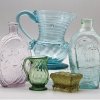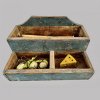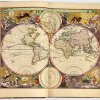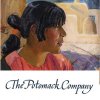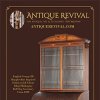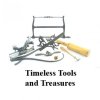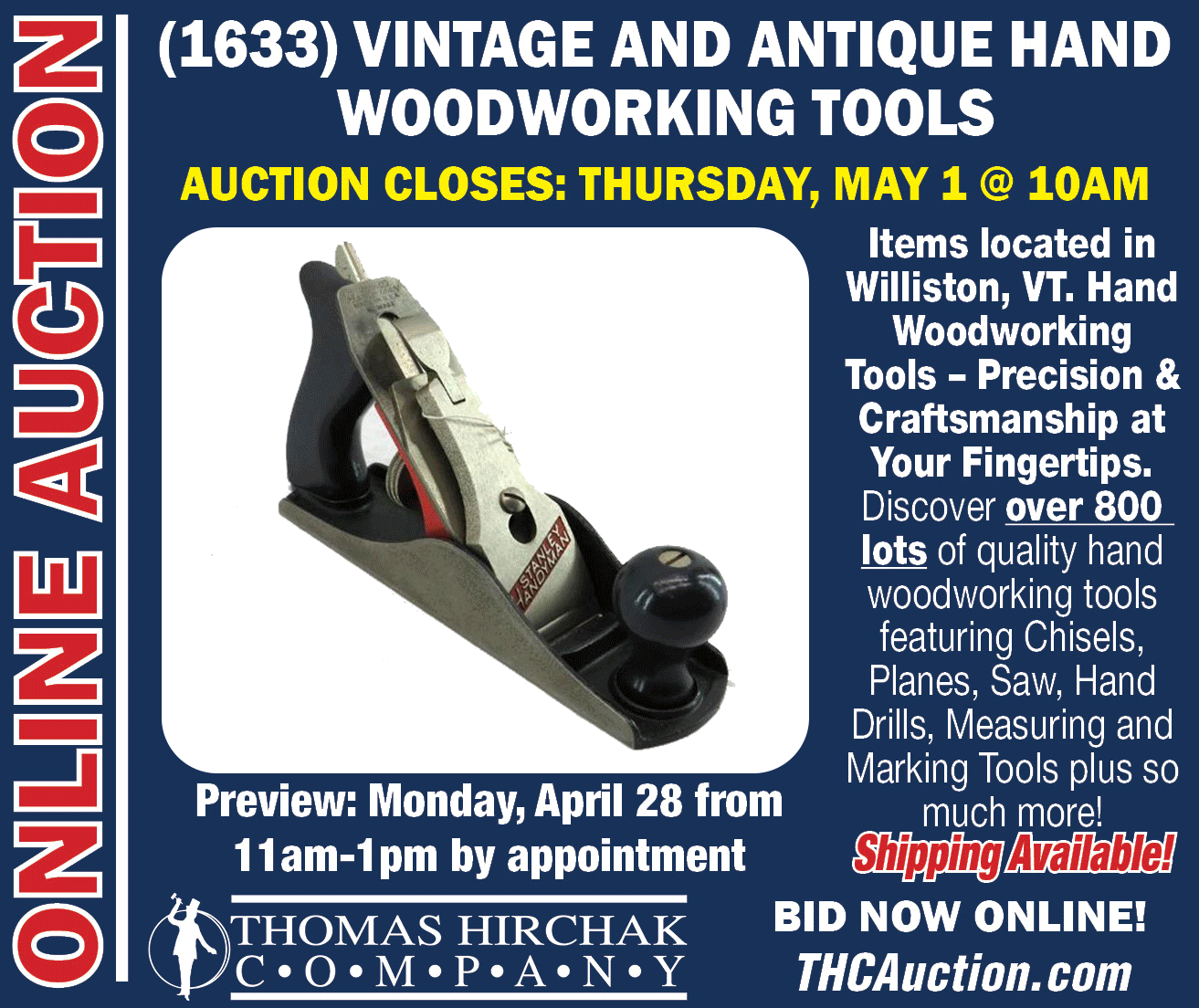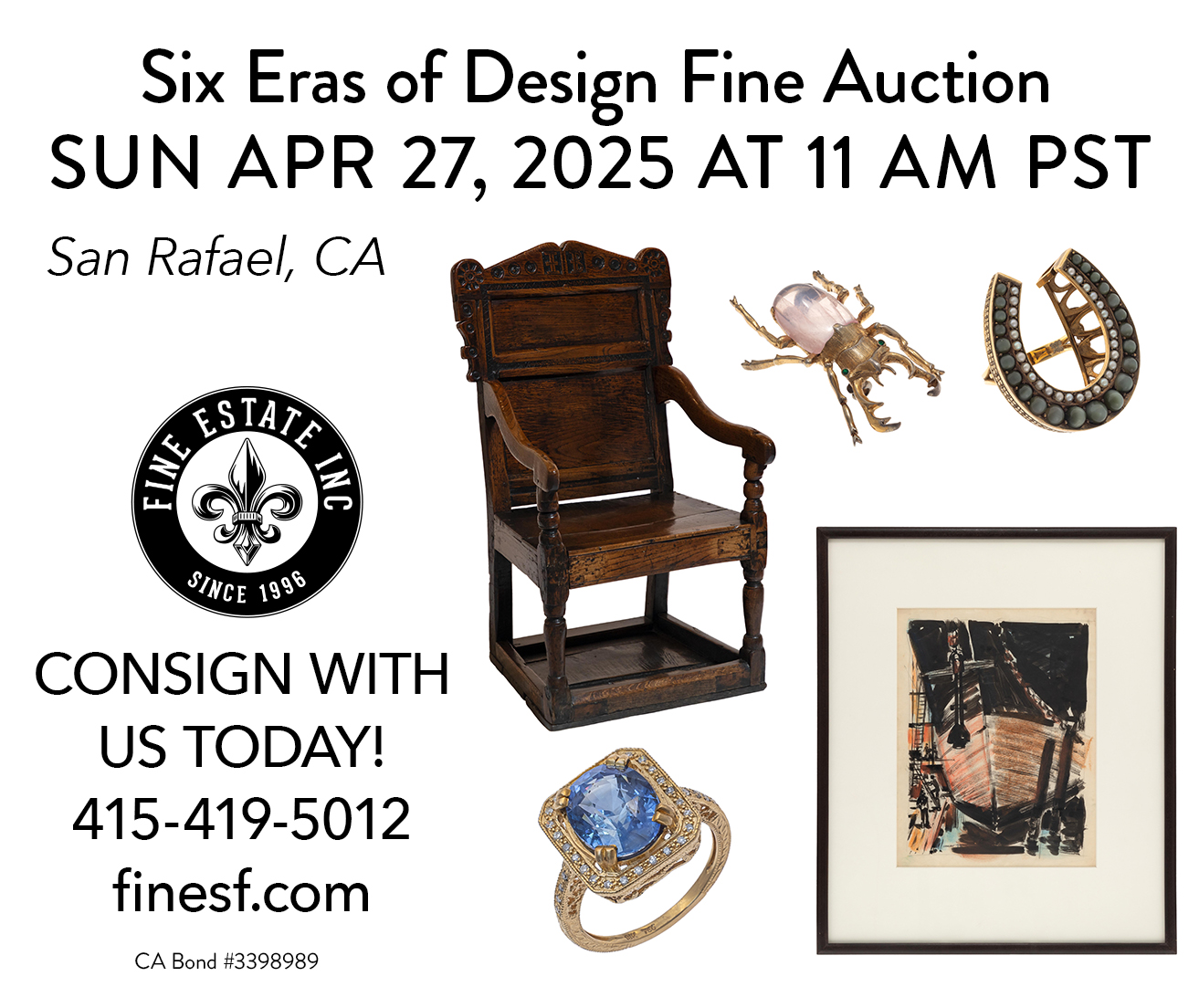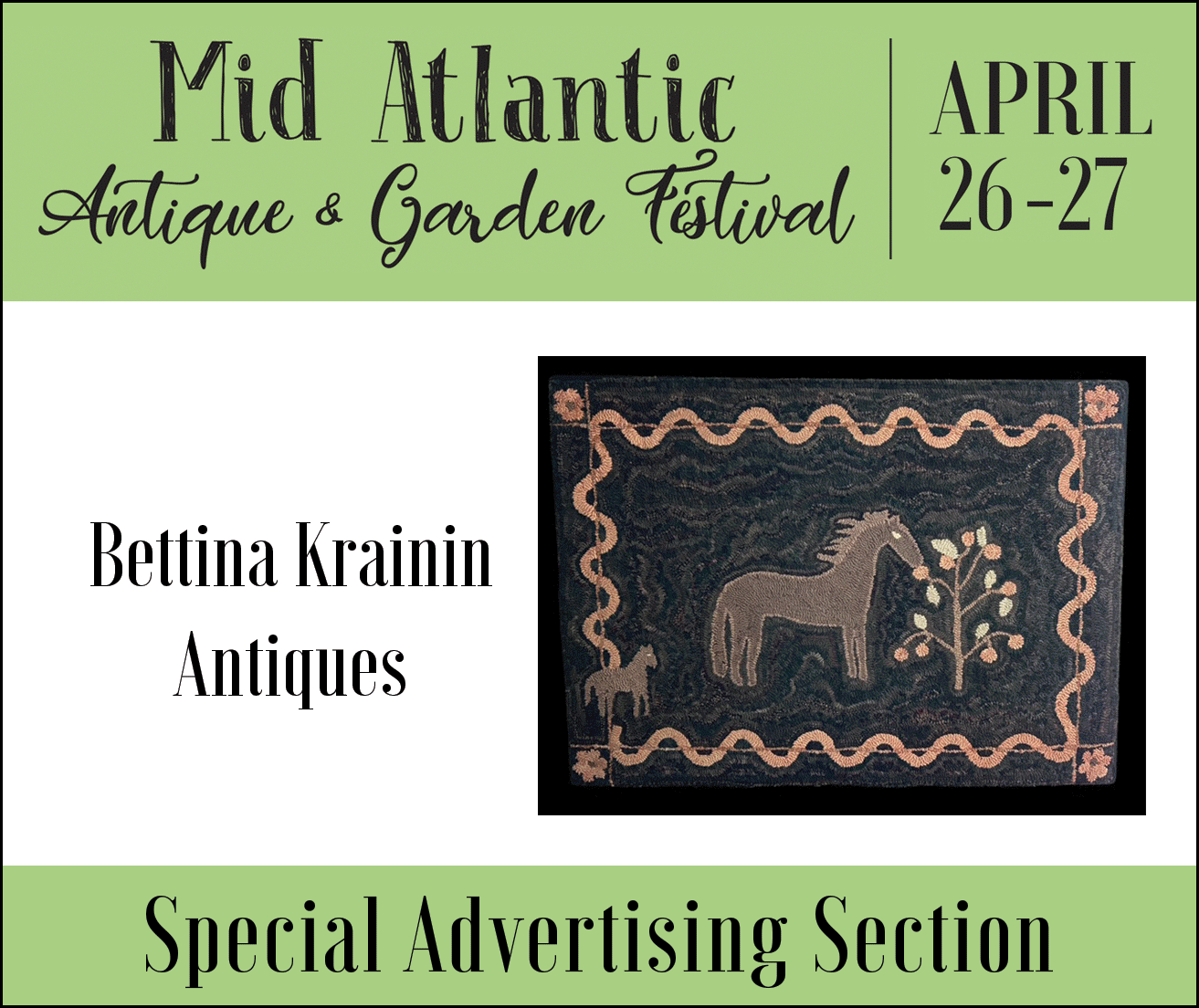The 60th Annual NHADA Show
August 12th, 2017
The New Hampshire Antiques Show, Manchester, New Hampshire
In the sometimes stuffy world of art and antiques, the annual New Hampshire Antiques Dealers Association show is a breezy summer affair. Held annually for 60 years and this year August 10-12, the show has evolved into one of the most important marketplaces for Americana.
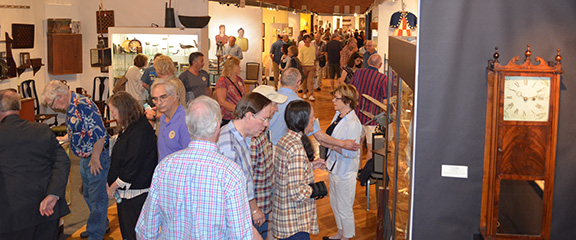
Shortly after the doors opened, the aisles were filled.
What makes this annual show so special? How has this event thrived? What is its secret? Dealers told us that it’s a combination of camaraderie, love for the material, and, most important, offering fresh objects.
It’s a show with serious stuff but is eminently approachable. Notwithstanding the opening door rush—a sight to see—there’s a relaxed and calm atmosphere here. The antiques are at all prices. Its presentation is simple and New England to its core. It has no early buying, no preview party, no lectures, nor string quartets with background music.
Show cochair Beverly Weir-Longacre likened it to a Shaker tool. “It’s form and function. It does what it’s supposed to do and looks beautiful. There’s no embellishment,” she said.
“One of the secrets of the show is, it’s peer driven. I call it the team. It’s a team effort—all the people on the board, the show committee, and all the volunteers. They pitch in. They love it and want to protect it, and strength is good for the whole industry,” she said.
Fresh is more than a buzzword here. It’s a sales strategy that is employed by many dealers despite the financial hardship of sitting on inventory. Peter Sawyer of Exeter, New Hampshire, said he puts things away all year for the show.

Bob Withington of Withington and Company, Portsmouth, New Hampshire, offered a pair (one shown) of large urns that once graced a Newcastle, Maine, home. They were by Adams and Storrie of Philadelphia and tagged $8500.

This circa 1830 Maine paint-decorated pine dressing table with a shaped splashback was $12,500 from Rich and Pat Garthoeffner.
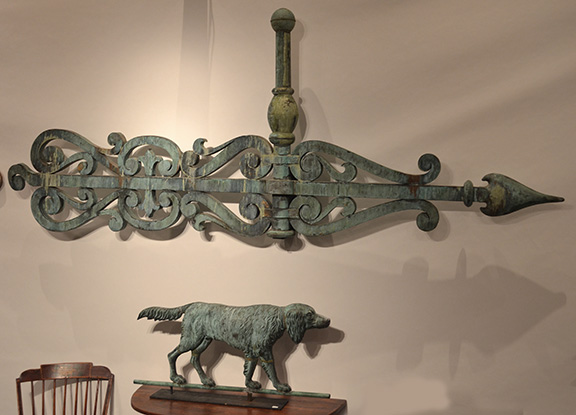
The large banneret weathervane, probably by J.L. Mott, came off a mill in Massachusetts and was then in an Arizona collection. Michael Whittemore of Punta Gorda, Florida, asked $19,500 for it, and it sold. The dog weathervane was $22,000.
Cornwall, Vermont, dealer Jeff Noordsy echoed Sawyer. “Fresh for sure…. I’m embarrassed if I’ve got five things from the year before, and I think most people feel that way. Almost everything we buy from now on is for next August,” said Noordsy. “There’s not a lot of frequent-flier material here.”
Beverly Weir-Longacre said she and her husband, Thomas R. Longacre, a dealer at the NHADA show since 1977, put 70 things away for this year’s event. “I spoke with a dealer on Wednesday [one day before the show opened] who told me she had just bought something on the floor and had already put it away for next year. That’s a big draw for our show,” Weir-Longacre noted.
“People know that they will see things that haven’t been on the market for a while,” said Gail Piatt, who will be retiring after this year.
It isn’t only freshness. There are antiques at all prices. Dealer Betty Berdan of Newsom-Berdan, Thomasville and Abbottstown, Pennsylvania, said, “There’s a mixture of antiques dealers, many who are the nuts and bolts of the business. Here everybody can buy something,” she said.

There were five of these Sheraton chairs with painted tablets and decoration (the armchair is not shown). Dated to 1820-30, the set was tagged $3350 by Stephen-Douglas Antiques, Rockingham, Vermont.
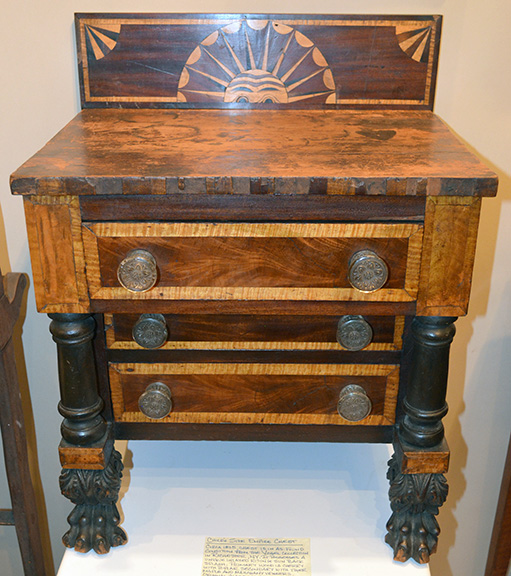
This circa 1825 cherry child-size Empire chest with an inlaid rising sun on the backsplash, original glass knobs, and maple and mahogany veneers was $7500 from Pratt’s Antiques, Victor, New York.

A model illustrating “The Kramer / Low-Down / Short Turn Gear.” In 1894 former blacksmith and wagon maker William F. Kramer of Dayton, Ohio, patented a gear for wagons with a “drop center” body, allowing the vehicles to turn on a much shorter radius. Kelly Kinzle asked $12,000 for the circa 1894 model.
Many reported robust sales. In the afternoon of opening day, we asked Paul Sullivan how the first day was. He simply mouthed, “Wow.” Michael Seward of Pittsford, Vermont, said, “We sold across the board. A lot of smalls, a couple of pieces of furniture, lots of wall stuff. It seemed like some real hungry people. It was a great crowd. It couldn’t have been better—except last year was awful good too.”
It’s difficult to compare one year of sales to the next, but Seward thought this year was better than last. “We saved just as many things, but the dealers and collectors coming to the show seemed a little less resistant to paying the price. If they liked it, they bought it.”
Seward said he and his wife, Lucinda, who is also a dealer, don’t “save just expensive things or the best things we find. To both of us, it’s important that we save nice items at the right price, so there’s a lot to choose from. That’s what we work the hardest at.”
According to Weir-Longacre, the record for the gate was broken—both the opening day number and the total attendance over the three days. The governor of New Hampshire, Chris Sununu, attended on opening day, as did Ted Gatsas, the mayor of Manchester.

A make-do Dunlap chest? The lower portion was probably the base of a Dunlap chest-on-chest that was turned into a paint-decorated dressing table. Paul Sullivan of Manchester, New Hampshire, asked $11,500 for it. It came from a home in Dunbarton, New Hampshire, where it had stayed in the same family for years. The circa 1800 Liverpool pitcher with a ship flying the American flag was being sold “as found” for $195. The fluid lamp, circa 1840, was $110.

This 89" x 83" appliquéd quilt with a large eagle and the phrase “Where Liberty Dwells, There Is My Country” was, according to family history, made by Hannah Ryan Smith, who was born in 1796 in Berkshire County, Massachusetts. She married in 1811 and moved to Porter, New York. The quilt, dated 1845, was passed down in the family and eventually shown at the Evanston, Illinois, historical society. The 13 stars represent the 13 original colonies. Steven Still asked $23,500 for it.
“I love this show,” Boston dealer Stephen Score said. “There are wonderful things. The show is friendly, and the dealers are friendly. It’s run by people who are concerned for us [the dealers] and the show. The best part is, it’s like being part of a family or group. Fabulous things and people—it’s just a lovely experience.
“I’ve been at shows that when you sell something, other dealers die a little inside. At this show, your fellow dealers are happy when you sell something,” Score added.
Philadelphia dealer Amy Finkel of M. Finkel & Daughter sold well. By early afternoon on opening day, she had sold six samplers, a pair of demilune tables, and a nice piece of glass. “The following days we sold three more samplers, the large 16-drawer painted chest that was on my outside wall, a good painted box, a nice basket, and a half-hull model,” Finkel wrote in an e-mail.
Finkel said, “We see many of the same wonderful, high-end collectors here that we all see in Philadelphia or New York, but they show up here in jeans, shorts, sandals, etc., and they love that this show is casual. In part, that’s the appeal of this show.”
Weir-Longacre said, “It’s fun to come wearing shorts and then go get lobster rolls somewhere.”

Here’s a collection of samples from a handwriting school in Roxbury, Massachusetts, mostly done by Mary, Charles, Harriet, and Emeline Humphris in 1816. Many are single-sided ink and watercolor verses, but there are also copy books, an itemized receipt for a wedding cake, and a manuscript book of directions and patterns for making coats and breeches that is dated 1826. DeWolfe & Wood Rare Books, Alfred, Maine, asked $4000 for the whole collection.

A Greenwood Seminary sampler from the “Open Window” group, circa 1820, from the Terrell-Morton family of Orange, Virginia, was priced at $18,000 by M. Finkel & Daughter, Philadelphia.

Thomas Thompson of Pembroke, New Hampshire, priced this wooden horse in old red paint at $675. It was probably once a riding toy; there is evidence of a long-gone saddle.
Josh Steenburgh, the other cochair of the show, said, “It was a home run this year. It was a record crowd, beating last year, which was a record. It was phenomenal to see that line wrap around the block. Coming into this year, with reports of the auctions and other shows, we didn’t know how it was going to go. We hope folks come. The response was tremendous.”
Steenburgh said that 60% of his first day’s sales were to new customers, a shocking number for him. When it was all over, he’d sold almost 70 objects.
When asked about the show’s success, he cited many of the same reasons others had. “It’s the promise we make to the people that show up that we’ve saved things throughout the year. There’s a large amount of dealers that take that seriously, and it’s not an easy feat to pull off. It’s a nightmare, and it can create an extraordinary amount of stress.” He noted that he’s already hoarding for next year. “If I don’t start now, in June I’ll be in panic mode. In some ways it makes it easier; I can plan ahead. If I buy five things this week, I can sell three and put two away.”
Steenburgh also praised the show’s presentation. “We open the doors and let them have at it…. Everybody there—the dealers—are passionate about the stuff. The dealers love the material.”
Richard Axtell said the cluster of New Hampshire shows works. “There are sixty-seven good dealers here [at the NHADA show]. In order to see all of this, you’d have to go to sixty-seven cities. Add in the other dealers at other shows, and you’d have to visit hundreds of cities. You’ve got it all right here.”
Weir-Longacre added, “I think people who love antiques would rather have two or three events to go to. This [Antiques Week in New Hampshire] is spread out just enough. It’s become a destination.”
 New dealers praise the friendly atmosphere. Tim and Charline Chambers of Missouri Plain Folk, Sikeston, Missouri, were doing the show for the third time. “Everybody welcomed us with open arms. It’s good people putting their best foot forward,” said Tim.
New dealers praise the friendly atmosphere. Tim and Charline Chambers of Missouri Plain Folk, Sikeston, Missouri, were doing the show for the third time. “Everybody welcomed us with open arms. It’s good people putting their best foot forward,” said Tim.
It was the first year for Christopher and Bernadette Evans of Waynesboro, Virginia. “The show is well curated and is run so well by a committee of dealers,” said Christopher.
“It’s like a big family here,” said Noordsy.
For more information, check the NHADA website (www.nhada.org).
Originally published in the October 2017 issue of Maine Antique Digest. © 2017 Maine Antique Digest


